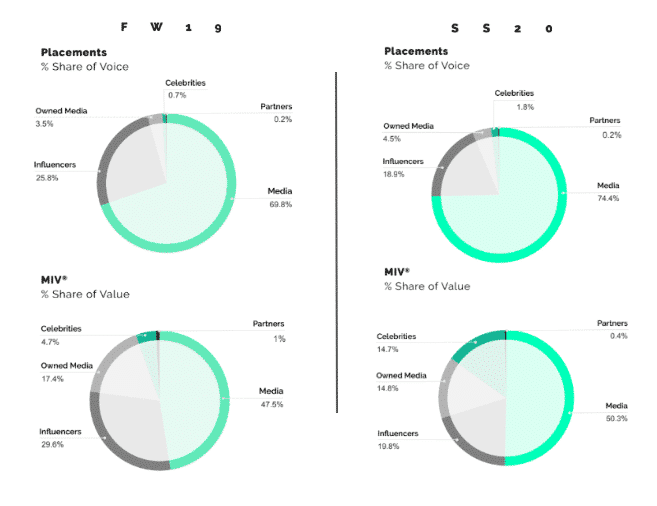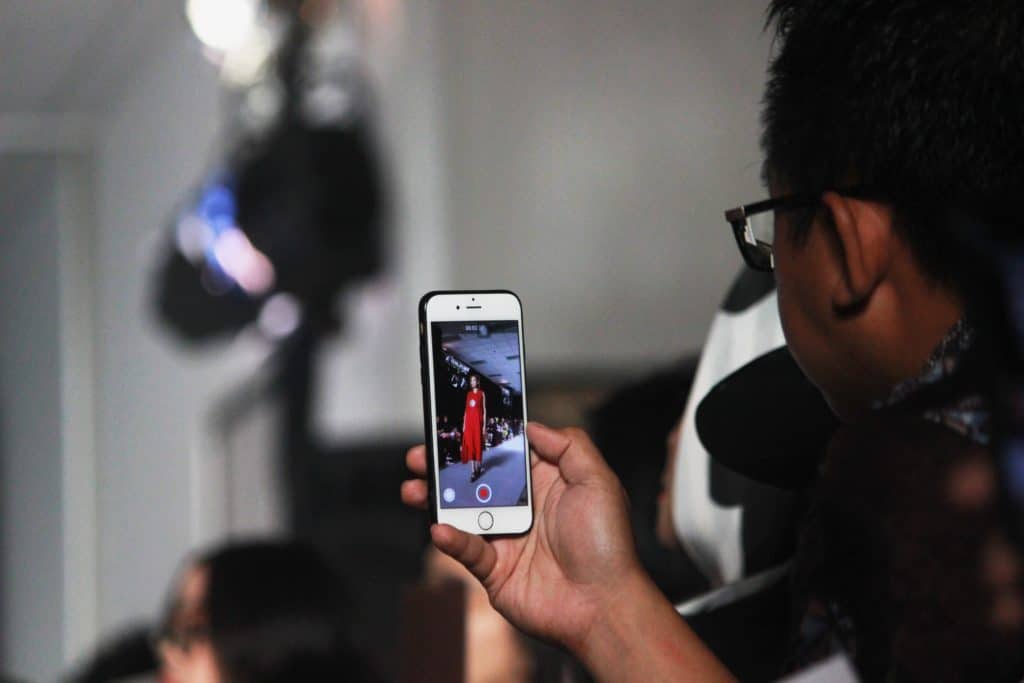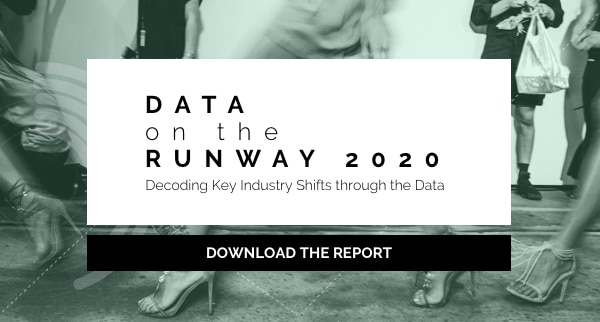Data on the Runway 2020 is the 3rd edition of our annual report that analyses the data from the top four global fashion weeks - New York, London, Milan and Paris - and the two major seasons for which they host shows, Fall / Winter 2019 (FW19) and Spring / Summer 2020 (SS20). Using Launchmetrics’ proprietary Media Impact Value™ algorithm (MIV®), we’ve examined the Voices that led the conversation across these essential industry events and identified those that provided the most value.
To deepen our investigation for the 2020 report, not only did we take a look at how one season plays out against another, but we also examined the way in which key industry shifts have impacted on the international fashion weeks and the brands presenting at them. The increasing pressure for fashion brands to promote sustainability through their actions, including those on the catwalk, has been a topic of mounting interest in recent years. There are also calls from organizations, like the CFDA, for more diversity and inclusivity in fashion week castings, and some fashion weeks are even experimenting with the event’s format, like London, to make them more accessible to the public. It’s these shifts, and more, that we have addressed by decoding the data from 2019.
The Value of the Seasons
Looking at the seasons, the overall Media Impact Value™ generated rose by 68% from FW19 to SS20, ($357.46M to $600.70M respectively), for which the Media Voice contributed the majority. At the forefront of this were the buzz-worthy moments that peppered the SS20 shows; Like Jennifer Lopez walking for Versace in the iconic jungle dress in Milan, Kylie Jenner announcing the surprise KYLIE X BALMAIN cosmetics collection, and French comedian Marie S’Infiltre infiltrating Chanel’s show in Paris.

Interestingly, however, the impact made by the Celebrity Voice showed the greatest increase, by an incredible 429% from one season to the next. Of the celebrities contributing, it was Filipina actress Heart Evangelista and Malaysian actress Neelofa, garnering $4.91M and $2.97M in Media Impact Value™. By strategically inviting high profile celebrities and influencers to their shows as audience members or on the catwalk, brands have been able to expand the reach of their event, the conversation created around them, and the ROI of their efforts.
Sustainability is Becoming the Norm
As aforementioned, the push for the fashion community to readily display their efforts to integrate sustainable actions has increased over the last few years, and during the 2019 seasons and the four fashion weeks, numerous brands used their shows to do just that. As highlighted in Data on the Runway 2020, some revealed they were to host carbon-neutral shows for SS20, with Gucci and Burberry amongst them.
However, it is Gabriela Hearst’s event at New York fashion week that was the industry’s first carbon-neutral show, which converted into a 258% increase in MIV® for the brand in comparison to the FW19 show. The designer’s commitments don’t end on the catwalk; during the same month the Gabriela Hearst UK flagship store in London was completed without the use of new materials, echoing her activity on the catwalk and extending the conversation’s impact. This, along with winning examples from Dior and other brands, further consolidate that although being sustainable is now becoming the norm, the correct actions can ultimately generate valuable buzz around a brand and in return value.
Shaking up the Format of Fashion Week
In August 2019, the British Fashion Council announced that they were to make London fashion week the first out of the four major weeks to open select shows during the SS20 season to the public. The decision was made in a bid to further unshroud the exclusivity that the fashion weeks still hold. One of those participating was House of Holland, which proved to be a lucrative idea for the brand, ramping up 35% more in MIV® than the F19 show. Over in New York, the recently appointed chairman of the CFDA, designer and filmmaker Tom Ford, reduced the length of New York fashion week to five days and five nights, as opposed to nine.
The move was to entice more international buyers and editors, which they hope will bring back designers who have taken to hosting shows in other cities. The SS20 New York fashion week went on to generate more than double the Media Impact Value™ that was achieved during FW19, amounting to $257.7M in MIV®.
From the Front Row, Directly to the Consumer
Another industry shift which we have seen to have a direct impact on the performance of brands is the evolution of those sitting on the front row. 100% of the top social posts during SS20 were either by influencers or celebrities and resulted in an incredible $415.2M in the MIV® generated by social posts, an increment of $164.3M on what was achieved FW19. The increase in influencers on the front row is understandable; consumers are looking to invest in brands that drive authenticity through their marketing activity, and brands want to connect with them in return. By inviting influencers that impact their target audience through their content, brands can emulate direct-to-consumer tactics on the runway and efficiently reach numerous consumer groups the moment the product is launched.
Samantha Conti of WWD says that “these new front-row guests are living endorsements for the brands, wearing their clothes on the street, videoing themselves critiquing products” and are effective at increasing ROI since they are more cost-effective than celebrities, helping marketing teams reach a more defined and often loyal audience.
As fashion and its tradeshows continue to evolve, it is critical for the organizations and brands to be in tune with the shifts in the industry to drive effective decision making and to optimize the impact of their marketing activities and the ROI they achieve. To understand the impact these and other key shifts are having on the major fashion weeks, Data on the Runway 2020, further explores the conversations and the data that supports them.

